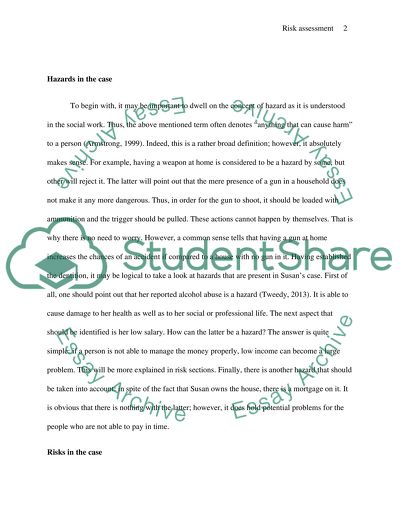Cite this document
(“Risk assessment Assignment Example | Topics and Well Written Essays - 2250 words”, n.d.)
Retrieved de https://studentshare.org/sociology/1700107-risk-assessment
Retrieved de https://studentshare.org/sociology/1700107-risk-assessment
(Risk Assessment Assignment Example | Topics and Well Written Essays - 2250 Words)
https://studentshare.org/sociology/1700107-risk-assessment.
https://studentshare.org/sociology/1700107-risk-assessment.
“Risk Assessment Assignment Example | Topics and Well Written Essays - 2250 Words”, n.d. https://studentshare.org/sociology/1700107-risk-assessment.


